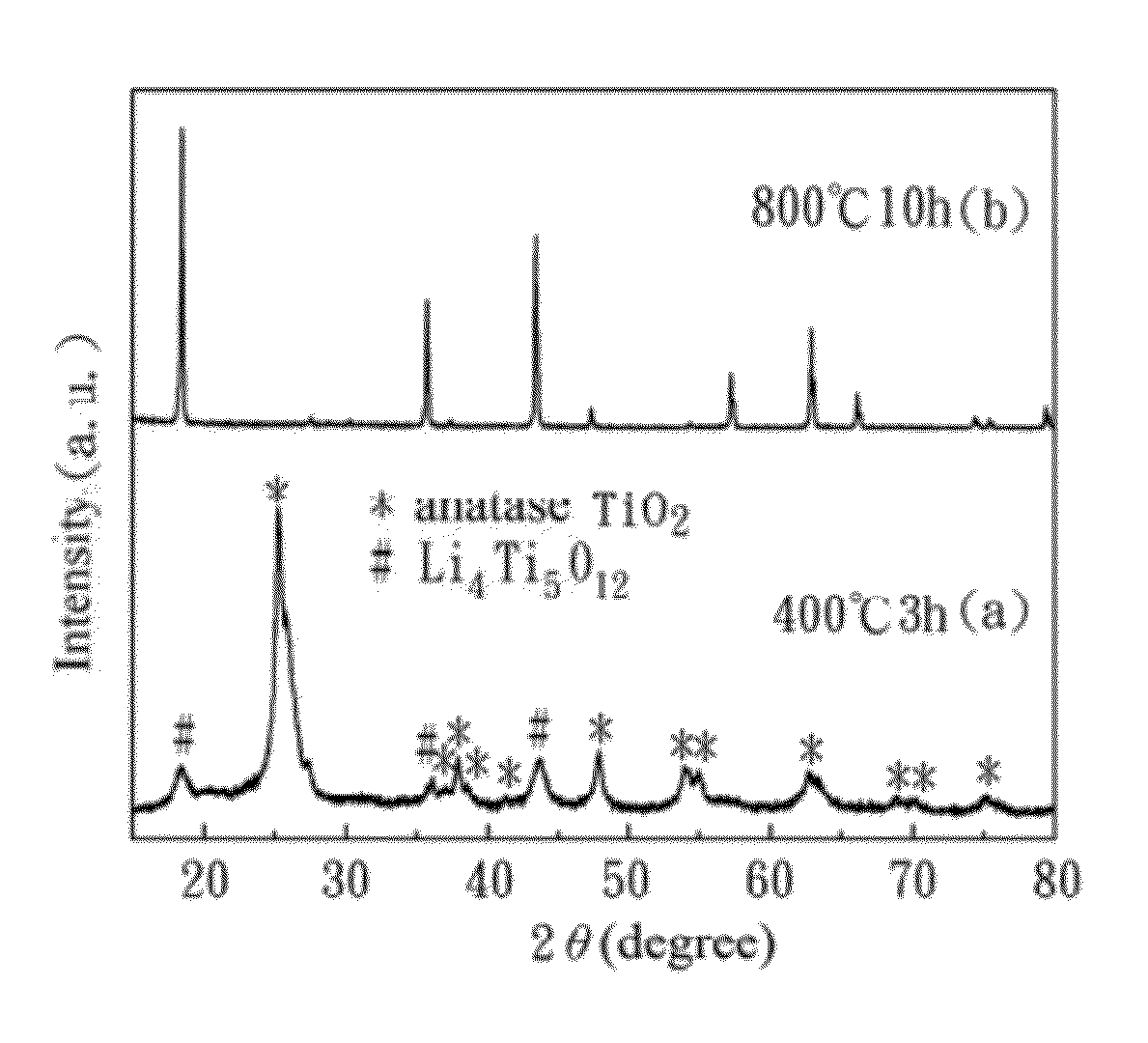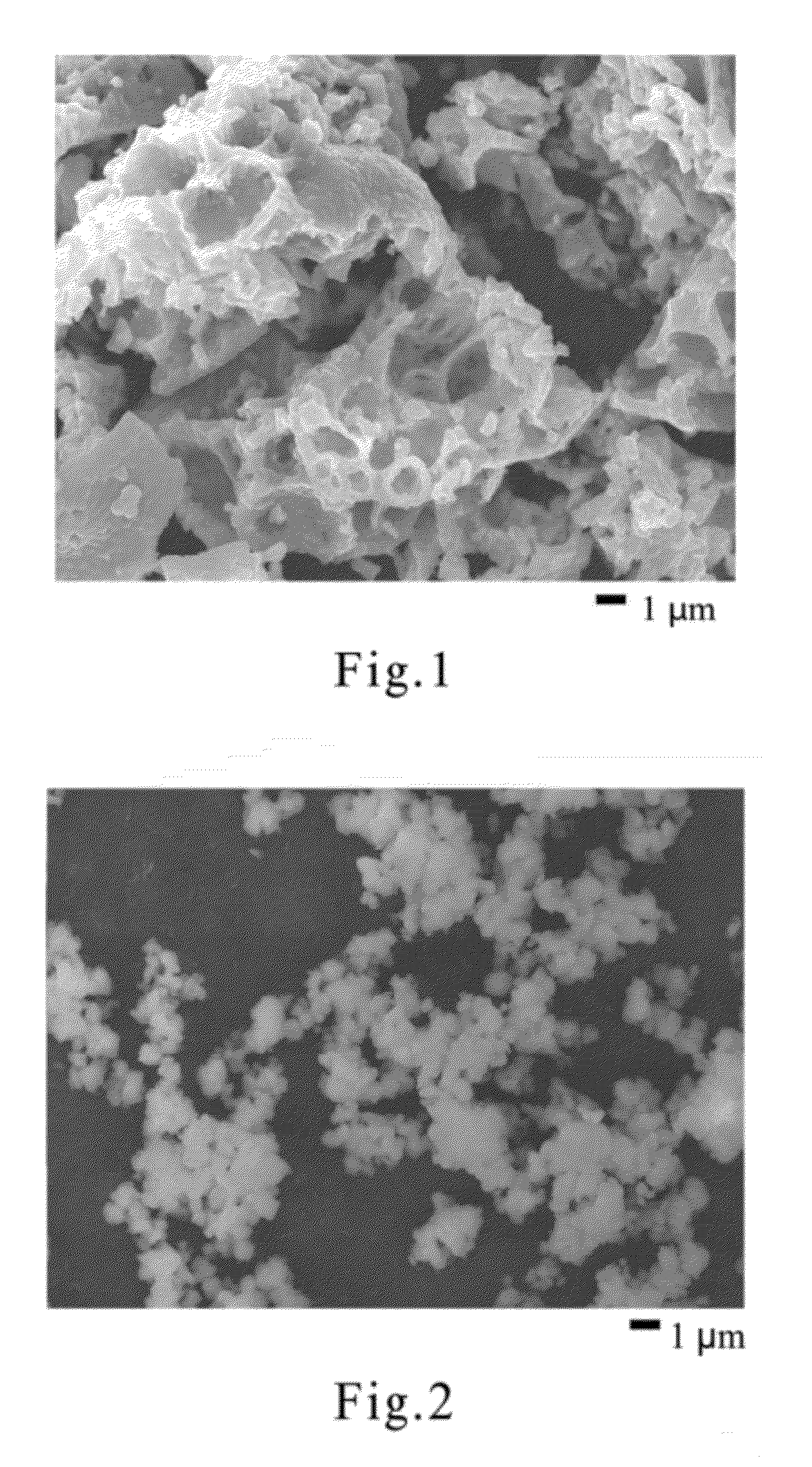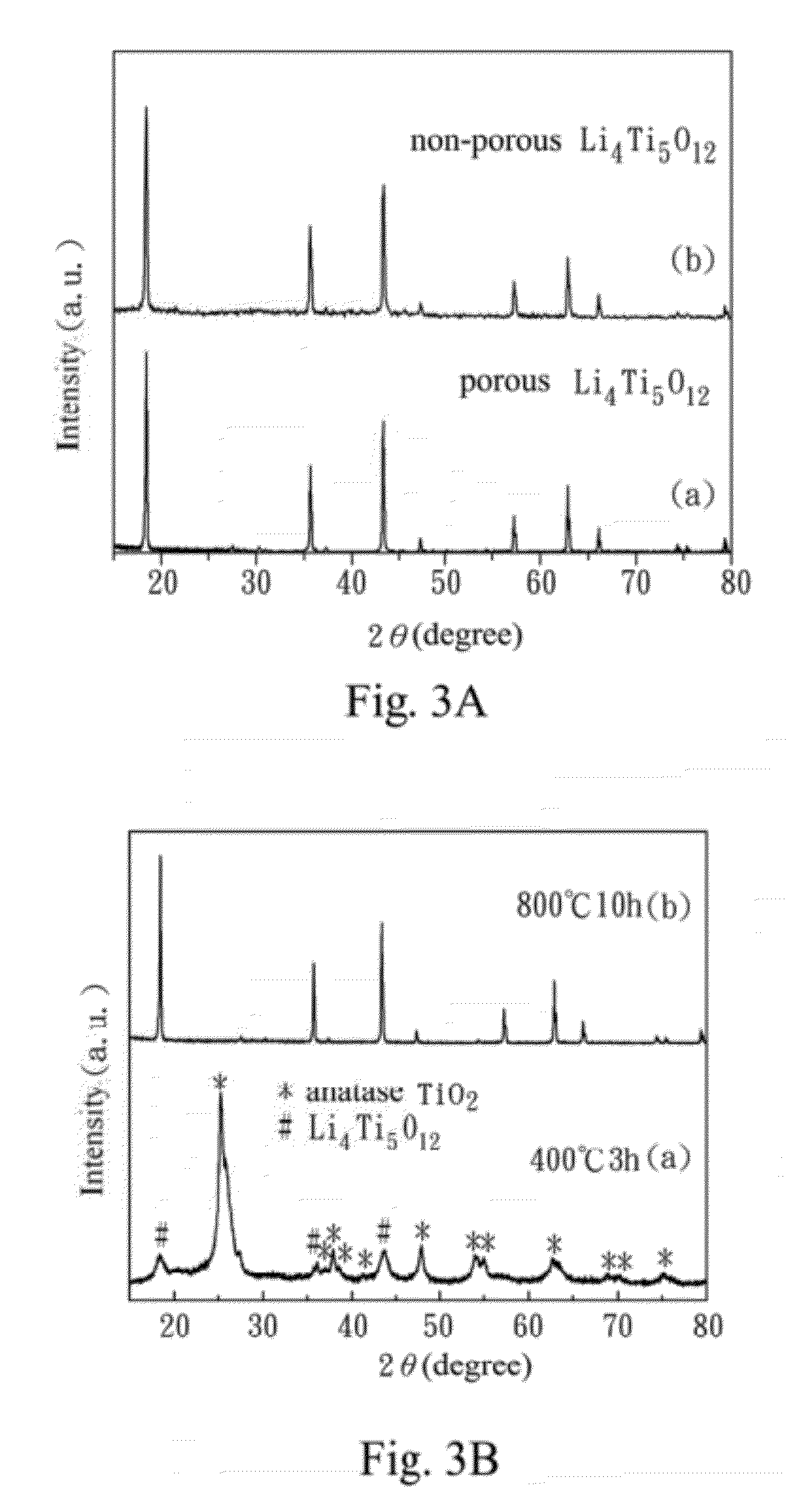Porous li4ti5o12 anode material, method of manufacturing the same and battery comprising the same
a lithium titanium oxide and anode material technology, applied in the field of porous lithium titanium oxide anode material, a manufacturing method of the same, and a battery comprising the same, can solve the problems of high cost of manufacturing the anode material of lithium batteries, the inability of lithium batteries of this type to perform the charge/discharge cycle rapidly, and the safety problem of the battery, so as to improve the conductivity and electrochemical properties of the li4ti5o12 material
- Summary
- Abstract
- Description
- Claims
- Application Information
AI Technical Summary
Benefits of technology
Problems solved by technology
Method used
Image
Examples
example 1
[0033]The present invention provides a method of manufacturing a porous lithium titanium oxide anode material, which modifies a conventional solid state method of synthesizing the porous lithium titanium oxide anode material so as to substantially reduce the cost of manufacturing the porous lithium titanium oxide anode material. The method of manufacturing the porous lithium titanium oxide anode material includes the following steps:
[0034]First, a mixed solution is prepared by mixing lithium chloride and 70 wt % of oxalic acid thoroughly, dropping titanium tetrachloride into the mixture immediately to avoid the hydrolysis of titanium tetrachloride in air, and heating said solution at 100-250° C. for a half hour. At this time, a repulsive force is slightly formed by releasing HCl gas so as to suppress the formation of aggregates.
[0035]Then, a first heat treatment is performed on the mixed solution at 400-600° C. and sintered for 3 hours. In this step, the reaction of lithium-ions wit...
experimental example 1
[0043]In Experimental Example 1, a crystal structure of the porous lithium titanium oxide anode material (from Example 1) is identified by the X-ray diffraction (XRD). The material obtained by performing different heat treatments in Example 1 can also be identified by the XRD. Referring FIG. 3A, XRD patterns of (a) the porous lithium titanium oxide anode material according to Example 1 of the present invention, and (b) the non-porous lithium titanium oxide according to Comparative Example 1 are shown. FIG. 3B is a XRD pattern of Example 1 of the present invention at different heat treatments.
[0044]As shown in FIG. 3A, the characteristic diffraction peaks of (a) Example 1 and (b) Comparative Example 1 are the same, and the lattice parameter is 0.8354 nm and 0.8372 nm by the Rietveld method for the porous lithium titanium oxide anode material and non-porous lithium titanium oxide respectively. The lattice parameters are almost the same in both examples, and it shows the lithium titani...
experimental example 2
[0047]In Experimental Example 2, the electrochemical properties of a battery comprising the porous Li4Ti5O12 anode material (Example 1) and the battery comprising Li4Ti5O12 synthesized by the conventional solid state method (Comparative Example 1), are compared by Electrochemical AC impedance Spectrum (EIS). Furthermore, the cycling stability of the battery comprising the porous lithium titanium oxide anode material is tested through the charge / discharge experiment with constant current. Referring to FIG. 4, an impedance spectrum of Example 1 and Comparative Example 1 respectively, and FIG. 5 is a potential-capacity diagram of Example 1 at different charge / discharge cycle numbers.
[0048]As shown in FIG. 4, it shows the impedance spectrum of the batteries of Example 1 and Comparative Example 1, which are discharged to 1.5. The low frequency region of the straight line is attributed to the Warburg impedance of lithium ion diffusion. The diffusion coefficient of lithium ion (Li+) for Ex...
PUM
| Property | Measurement | Unit |
|---|---|---|
| temperature | aaaaa | aaaaa |
| time | aaaaa | aaaaa |
| time | aaaaa | aaaaa |
Abstract
Description
Claims
Application Information
 Login to View More
Login to View More - R&D
- Intellectual Property
- Life Sciences
- Materials
- Tech Scout
- Unparalleled Data Quality
- Higher Quality Content
- 60% Fewer Hallucinations
Browse by: Latest US Patents, China's latest patents, Technical Efficacy Thesaurus, Application Domain, Technology Topic, Popular Technical Reports.
© 2025 PatSnap. All rights reserved.Legal|Privacy policy|Modern Slavery Act Transparency Statement|Sitemap|About US| Contact US: help@patsnap.com



